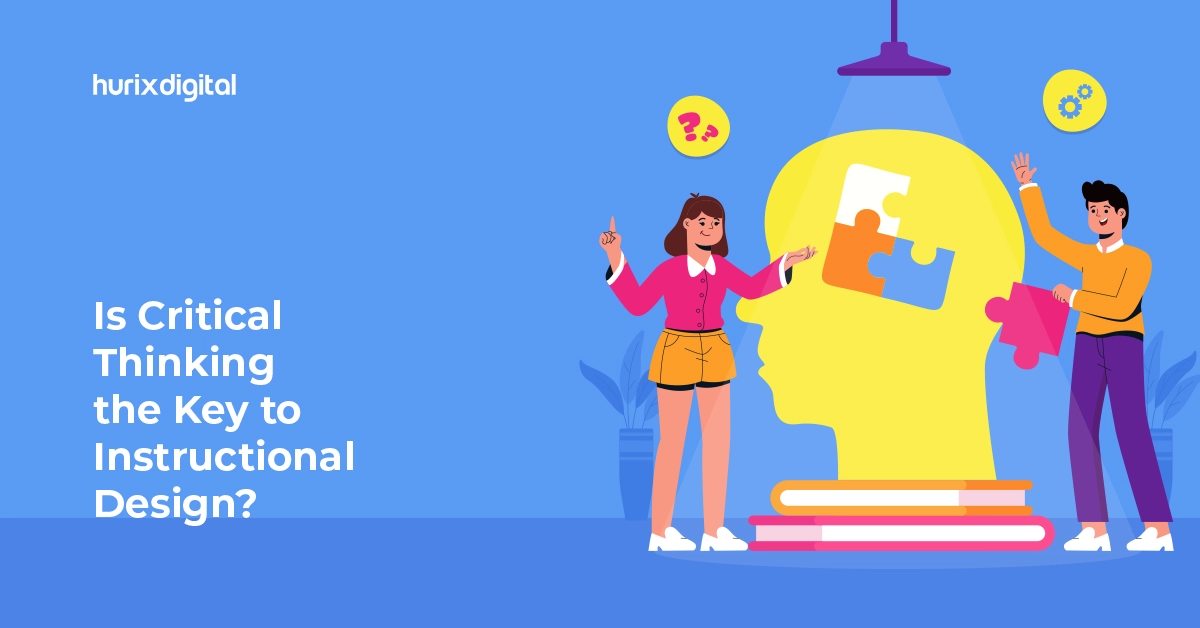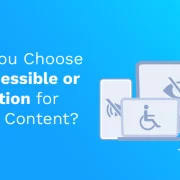
Is Critical Thinking the Key to Instructional Design?
Summary
Explore whether critical thinking is crucial for effective instructional design. This blog discusses how incorporating critical thinking can enhance educational experiences.
In today’s ever-evolving landscape, critical thinking is more than just a desirable attribute. It’s a crucial skill set that learners need to navigate the complexities of the world.
Critical thinking is not just about problem-solving, but also about the ability to analyze and evaluate information. Moreover, critical thinking goes hand in hand with creativity. As learners analyze and evaluate information, they also need to think creatively to come up with innovative solutions.
So, is critical thinking truly the key to Instructional Design success? Is it the sole ingredient, or does it require a blend of other elements?
Let’s delve into these complex questions, exploring the significance of critical thinking and its interplay with other essential instructional design strategies.
Table of Contents:
- The Power of Critical Thinking in Instructional Design
- Challenges of Integrating Critical Thinking in Instructional Design Companies
- Beyond the Individual Skill: Intertwining Critical Thinking with Other Design Strategies
- Critical Thinking in Instructional Strategies for eLearning
- Exploring the Curriculum: Nurturing a Culture of Critical Thinking
- Final Note
The Power of Critical Thinking in Instructional Design: Examining Benefits
Instructional design is the process of creating effective learning experiences and materials that help learners achieve their educational objectives.
Instructional designers create courses that encourage learners to think critically and creatively. Critical thinking empowers instructional designers (IDs) to transcend rote memorization and craft engaging learning experiences that foster deeper understanding and lasting impact.
This vital skill empowers instructional designers to:
- Analyze Needs: Critically evaluating learner needs, context, and learning objectives ensures the creation of relevant and targeted learning content.
- Design Effective Activities: Analyzing existing data and research allows for the selection and implementation of appropriate instructional activities that promote deeper understanding and knowledge application.
- Evaluate Outcomes: Critically assessing the effectiveness of learning experiences through data analysis and feedback mechanisms is crucial for ongoing improvement and adaptation.
- Navigate Complexities: The ever-changing landscape of education and diverse learner needs necessitate critical thinking to navigate challenges and find innovative solutions.
Also Read: 8 Workforce Training Expectations and How to Meet Them
Challenges of Integrating Critical Thinking in Instructional Design Companies
While critical thinking offers numerous benefits, certain challenges can hinder its effective integration:
- Time constraints: Thorough analysis and design often require dedicated time, which can be limited in fast-paced project environments.
- Lack of resources: Access to relevant data, research, and expert guidance can be limited, hindering informed decision-making.
- Bias and assumptions: Unconscious biases and preconceived notions can cloud critical thinking and lead to flawed design choices.
These challenges highlight the importance of proactive strategies and ongoing commitment to fostering a critical-thinking mindset within the ID process.
By implementing the strategies outlined later in this blog, ID professionals can overcome these challenges and unlock the full potential of critical thinking in their work.
Beyond Individual Skill: Intertwining Critical Thinking with Other Design Strategies
The global eLearning service providers market is projected to reach $400 billion by 2026, highlighting the growing demand for effective and engaging online learning solutions.
While critical thinking is undeniably crucial, it thrives in a symphony with other essential ID strategies:
- Learner-Centered Design: Placing the learner at the heart of the design process aligns perfectly with critical thinking, as it encourages analyzing learner needs and preferences to craft engaging experiences.
- Problem-solving: Effective problem-solving in instructional design requires critical thinking as it involves identifying, analyzing, and finding creative solutions to design challenges and learning gaps.
- Creative Thinking: While distinct, critical thinking works hand-in-hand with creative thinking in instructional design. Evaluating existing solutions and brainstorming novel approaches to learning ignite creative problem-solving and enhance the overall learning experience.
Critical Thinking in Instructional Strategies for eLearning
As eLearning continues to evolve, critical thinking will remain a key driver in creating effective and adaptable online learning experiences.
Professionals believe that personalized learning strategies are crucial for improving learner engagement and retention.
These eLearning solutions present unique opportunities to leverage critical thinking skills:
- Interactive Learning: Critical thinking thrives in interactive eLearning environments where learners actively analyze information, make choices, and solve problems.
- Data Analytics: Utilizing data analytics platforms to critically evaluate learner behavior and engagement allows for continuous improvement of eLearning companies.
- Personalized Learning: Critical thinking facilitates the design of personalized learning pathways, tailoring content based on individual needs and learning styles.
- Problem-Based Learning: Present learners with realistic scenarios and encourage them to analyze the situation, generate solutions, and evaluate their effectiveness.
- Open-Ended Questions: Go beyond factual recall questions and pose questions that require critical analysis, interpretation, and justification of answers.
- Case Studies and Simulations: Expose learners to real-world problems and encourage them to apply their knowledge and analysis skills to find solutions.
- Collaborative Learning Activities: Facilitate discussions, debates, and peer review activities where learners can share and evaluate different perspectives.
- Metacognitive Prompts: Encourage learners to reflect on their thought processes, how they arrived at their conclusions, and the reasoning behind their decisions.
Exploring the Curriculum: Nurturing a Culture of Critical Thinking
Nurturing critical thinking requires a holistic approach extending beyond the specific instructional strategies employed in courses.
Instructional designers analyze learner feedback and critically examine learning outcomes to refine and improve their practices. This ensures that the learning experiences they create effectively equip learners to navigate the complexities of the modern world.
Here are some additional considerations:
- Model Critical Thinking: ID professionals and instructors should role-model critical thinking by openly discussing their thought processes and encouraging dialogue.
- Create a Safe Space for Inquiry: Foster an environment where learners feel comfortable asking questions, challenging assumptions, and expressing diverse viewpoints.
- Continuous Assessment and Feedback: Regularly assess learners’ critical thinking skills through various methods and provide constructive feedback to promote self-reflection and improvement.
Also Read: Ensuring Consistency and Quality in Translated Workforce Learning Materials
Final Note
While critical thinking plays a pivotal role in instructional design, it isn’t a singular key that unlocks success. It operates in tandem with other crucial skills and strategies, forming a powerful symphony that creates meaningful learning experiences.
Are you ready to take your instructional design skills to the next level? Hurix Digital offers a comprehensive suite of services and resources to help you excel in the world of instructional design.
From expert training and consultation to cutting-edge learning technology solutions, we equip you with the tools and knowledge you need to design impactful learning experiences that leave a lasting impression. Contact us to learn more today!

Performance, Results, Growth, and Life-Long Learning define my professional life. I am passionate about making workplace learning planful, purposeful, and impactful. I take pride in partnering with clients and bringing them the best in learning design and creating solutions that address business challenges.







